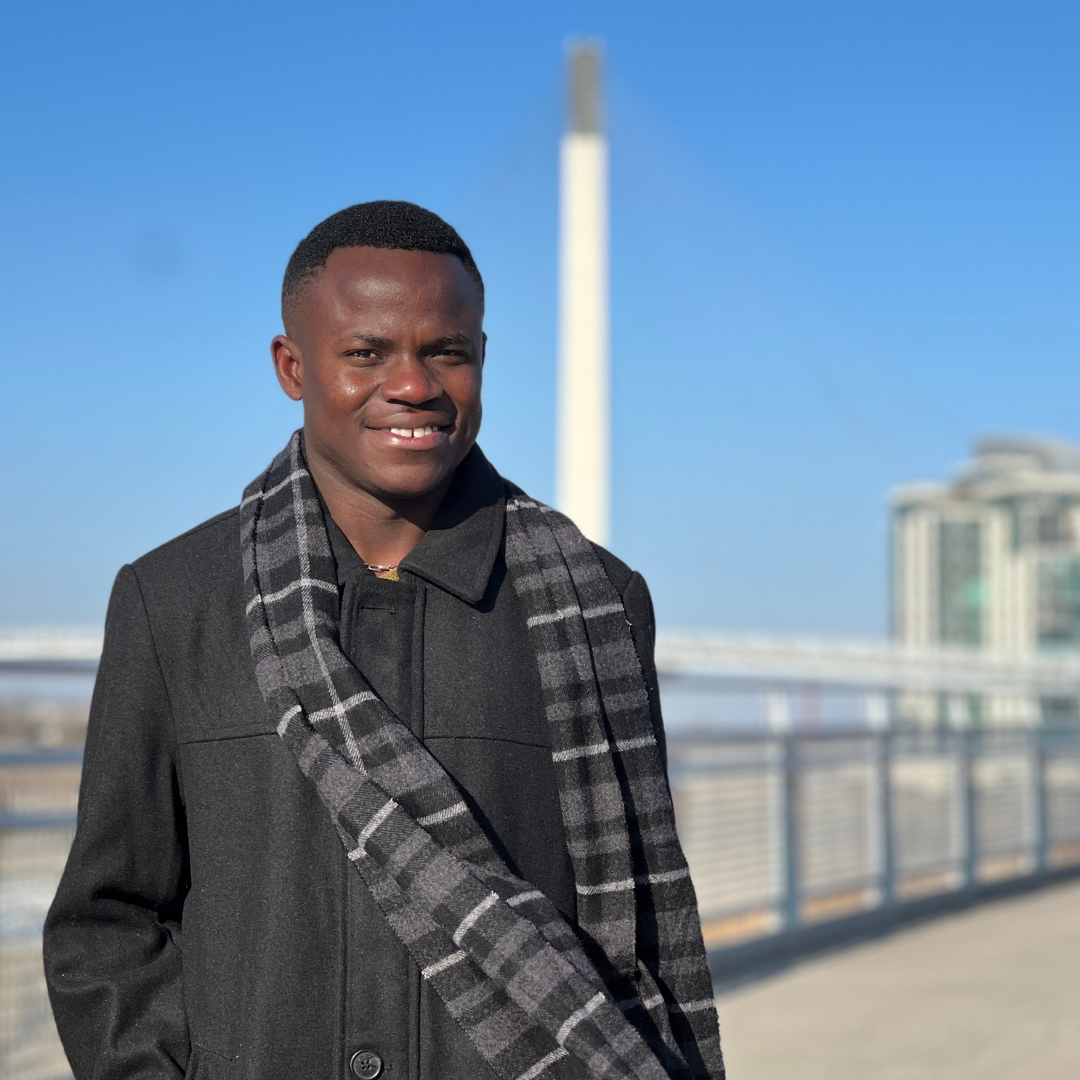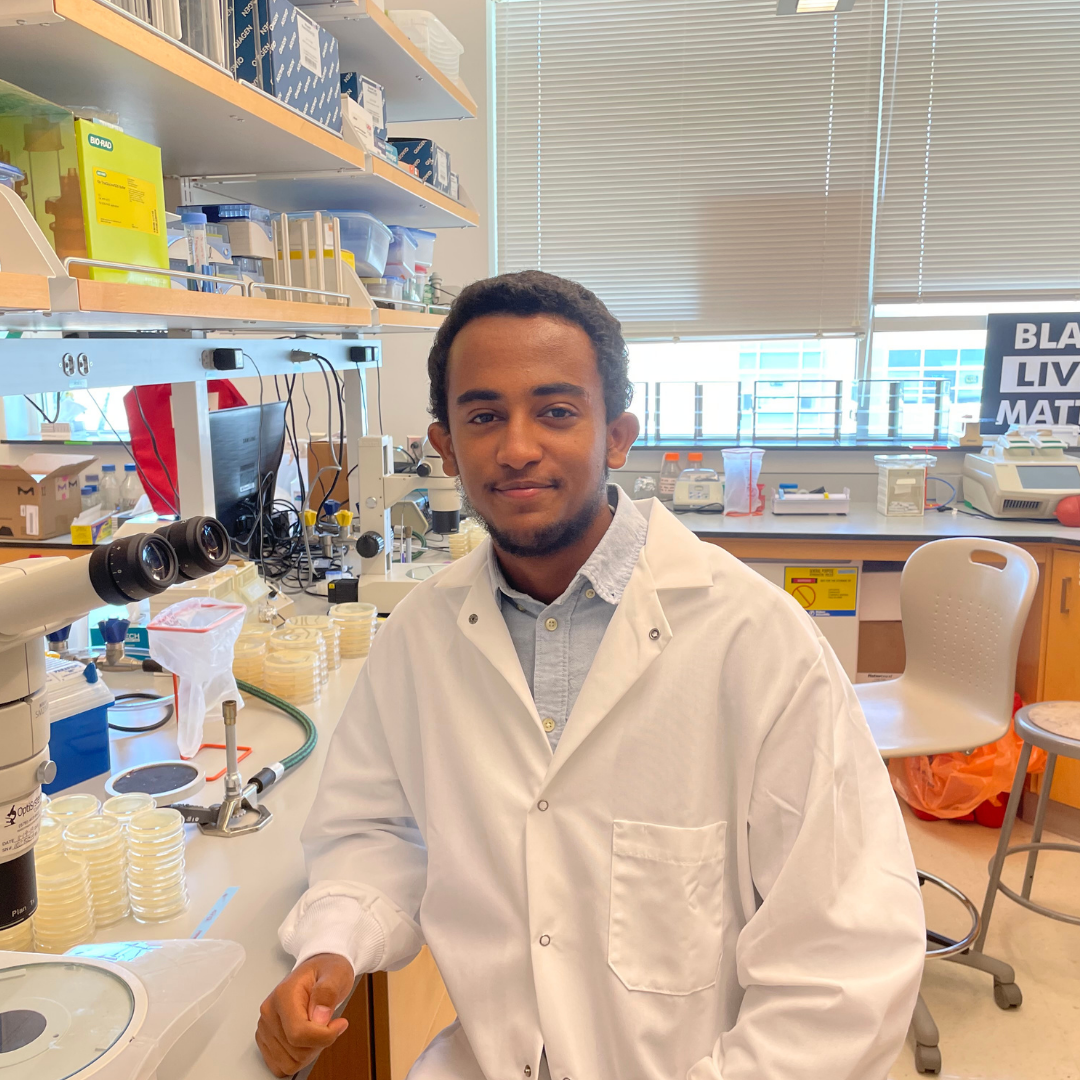Meet Tinaye Leon Chiyaka of Stellenbosch University (South Africa)! The Zimbabwe national is a PhD Student in the Clinical Mycobacteriology and Epidemiology (CLIME) led by Prof. Grant Theron. Tinaye is also among the 700+ international researchers who make up the 2020 Microbiome – a virtual meeting attended represented by 50+ countries. This is Tinaye’s first meeting at CSHL and, based on his feedback, we doubt it’ll be his last.
Tell us about your research.
My research is investigating the pre- and post-treatment lung microbiome, metabolome, and immune signatures at the site of disease in patients with active pulmonary tuberculosis.
How did you decide to focus on this area/project?
My master’s research gave me a strong background in microbial genomics. For my PhD studies I was looking to apply my expertise in microbial genomics to infectious diseases (especially TB which is a public health crisis in both my home country Zimbabwe and here in South Africa). After a productive conversation with my current supervisor Prof. Grant Theron I decided to take up the challenge to study the association of the microbiome with metabolites and immune signatures at the site of disease in TB.
What and/or who is the inspiration behind your scientific journey?
I have always been passionate about science, but I have also learnt from the best notably my masters mentor Prof. Idah Sithole-Niang and my current supervisor Prof. Grant Theron.
What impact do you hope to make through your work?
Through my study, I hope to describe -- for the first time in the South African population -- the lung microbiome at the site of disease in TB and how it correlates with metabolic and immunological biomarkers at the site of disease in TB. This will hopefully lay a foundation for clinical trials on host directed therapies (HDT) or adjunct treatments to maintain specific microbes at the site of disease in TB for better clinical outcomes during, and after TB treatment.
Where do you see yourself in five years?
I hope to have concluded my PhD studies by then and doing a Post Doc preferably doing follow up research on my PhD research.
What do you love most about being a researcher?
As a researcher, it is never a dull day as you learn every day. I get to meet so many people who see the world in a different way. It also gives me great joy to know that my work can be instrumental in dealing with TB.
What drew you to attend this meeting?
Great minds give talks at the CSHL meetings; just a quick look at the speakers who presented their work during the CSHL Microbiome meeting tells you why I wanted to be here.
What is your key takeaway from the Meeting; and how do you plan to apply it to your work?
The microbiome is key player in human health and disease, and we are still learning so much about the microbiome in disease states. I was also encouraged by the number of researchers looking into the gut microbiomes and the high level of understanding of the gut microbiome their findings represented. This gives me hope that in the near future we will see more work on different anatomical sites. I intend to incorporate new analytical approaches I have learnt here into my PhD research.
What feedback or advice would you share with someone considering to participate in this meeting?
I recommend my fellow scientists to attend at least one CSHL meeting in your respective disciplines. Research presented during the CSHL meetings is cutting edge and you get to network and meet so many people with similar research interest as yours. It is also worthwhile to mention that Slack makes the virtual experience memorable.
What’s the most memorable thing that happened during the Meeting?
I have so many memorable moments from this meeting but if am to choose one, the talk by Suzanne Devkota on “creeping fat” was mind blowing.
Thank you to Tinaye for being this week's featured visitor. To meet other featured researchers - and discover the wide range of science that takes part in a CSHL meeting or course - go here.
Images provided by Tinaye Chiyaka.

































